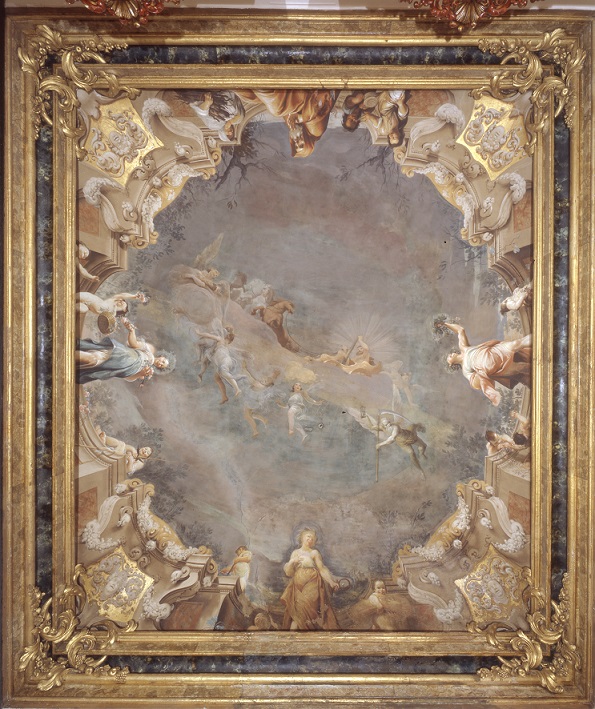Totally different from the previous rooms, in which there is a collaboration between a figure painter and a quadraturista, here we have the work of a single artist, Giuseppe Maria Crespi, who worked here in the years around 1699-1700 . In the vault, the quadratura has a marginal role, being just a simple railing set on the real frame of the room, from which four figure are leading, carrying the traditional attributes of the Seasons. But their characterization has a strong popular flavour, so that it can be said that they seem more like peasants in disguise trying to draw our attention, more than refined allegorical figures.
The Spring, with a myrtle crown, has the hands full with flowers and laughs looking towards the center of the room, the Summer han a crown of wheat spikes and with a yellow dress, equally laughs with a mirror in her hand. Fall lift up his dress, showing a pair of robust legs ready to press the harvested grapes. Winter is depicted as an old man, trying to protect himslef from the cold near the fire, while some boys are playing with coarse humor.
At the center of the vault there is the Triumph of Hercules, central theme of the celebrative decoration, but that seems to be like a side show, confronted with the popular vibrancy of the Season figures. The triumphant hero is crossing the sky on a chariot, with a parade of Horae, represented as slender winged girls, opposed to Time, an old winged man with the scythe and the hourglass, falling down defeated by the now immortal Hercules.










